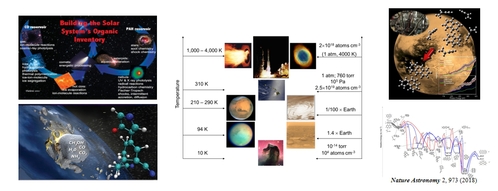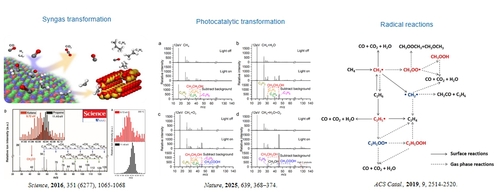- Mass Spectrometry for Energy Transformation and Astrochemistry
- Extreme Ultraviolet Electronic Structure Characterization and Lithography
- Electronic Structure Characterization for Operando Micro/Nano Devices
- High-sensitive, Space-Resolved and Time-Resolved Electron Spin Dynamics
- In-situ/Operando Soft X-ray Spectroscopy and Scattering
- Soft X-ray Ptychographic Nanoscopy
- Resonant Coherent Scattering
- High Throughput In-situ/Operando Tender X-ray Spectroscopy
- Tender X-ray Spectromicroscopy and Ptychography
- Test Beamline

Scientific Scope 1: Astrochemistry plays a key role in interpreting astronomical spectra and simulating reaction mechanisms, thereby validating observations. The detection of complex organic molecules (COMs)—such as aldehydes, ketones, acids, and amino acids—provides tracers for studying physical and chemical conditions in star-forming regions. Over 200 molecular species have been confirmed in interstellar space, with many more awaiting identification. Additionally, meteorites containing carboxylic acids, amino acids, and ribose offer clues to the origin of life, as they may have delivered prebiotic materials to early Earth. Investigating the formation mechanisms of extraterrestrial organic molecules with the utilization of SVUV-PIMS technology is significant to astrochemistry, astrobiology, and the study of galactic evolution and life’s origins.

Scientific Scope 2: The primary scientific objective of the combustion station is to develop combustion reactors that simulate the combustion processes occurring in aircraft engines, ramjets, cryogenic liquid rocket engines, and solid-propellant missiles, with a particular emphasis on combustion chemistry across broad temperature and pressure ranges. To achieve this goal, the station investigates the pyrolysis, oxidation, and combustion of various fuels, including sustainable aviation fuels, high-energy-density aviation fuels, energetic materials, ionic liquid rocket propellants, as well as liquid hydrogen and methane. Based on the detailed experimental data obtained, both comprehensive and simplified reaction mechanisms for these fuels will be developed and utilized to simulate engine combustion processes. These studies are essential for advancing new fuel formulations and optimizing combustion engines towards higher efficiency and lower emissions.

Scientific Scope 3: Increasing the sensitivity and mass resolution of photoionization mass spectrometry enables the in-situ detection of trace and fleeting reactive intermediates such as ketene, radical, carbene et al. during catalytic reactions. This capability is critical for the determination of key reaction steps and elucidation of reaction network during the catalytic reaction, including thermal catalytic and photocatalytic reactions. The reactions include syngas to olefins, oxidative coupling of methane, methane to aromatics, methanol to hydrocarbons, oxidative dehydrogenation of propane, methane dry reforming, catalytic recycling of plastics et al..

